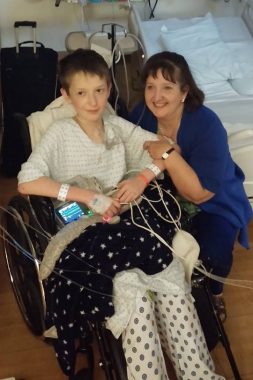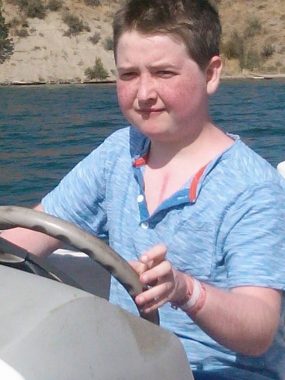Don’t Picture My Son With PH

They say pictures are worth a thousand words, but sometimes they can be a one-sided conversation. Some photographers tell better stories, but it’s usually up to the observer to gather hints from the picture to understand what’s going on. Smiling people must be happy. Crying people must be sad. And when an image captures a person who looks unwell but is doing something fun, things can’t be too bad.
Comparing one-sided conversations to photographs of my son Cullen when he had pulmonary hypertension (PH) has helped me better understand why he dislikes photos so much.
At 8, Cullen was diagnosed with PH, and at 14, he received a heart and double-lung transplant. For the six years in between, I documented much of his life in pictures.
As I mentioned in a previous column, “As a mother and caregiver, I was focused on both survival and preservation. Having a child with a life-threatening illness took the sarcasm out of the expression ‘Take a picture, it lasts longer.’ Instead, that became exactly what I wanted to do.”

Shouldering a backpack containing a Flolan pump, Cullen hunts for Easter eggs in April 2012. (Photo by Colleen Steele)
Pictures are reminders of all that he has been through, but unfortunately, PH shows up in the ones taken even during happy childhood moments, celebrations, and achievements.
Cullen’s flushed face, caused by vasodilators, and the shoulder straps from his backpack, which contains his continuous intravenous Flolan (epoprostenol GM) pump, tend to monopolize the conversation. Birthday parties, holidays, and school activities seem to disappear, like magic, from the photos.
I gasp at pictures of Cullen taken during his last year of PH. He was in severe heart failure, waiting for a transplant and reduced to skin and bones. Cullen describes them as his “skeleton pictures.” He doesn’t appreciate the visual reminders.

Cullen, with Colleen, receives the transplant call on Aug, 7, 2014. (Courtesy of Colleen Steele)
PH influenced how Cullen’s childhood would “look,” and it speaks volumes in every picture.
In August, Cullen will celebrate eight years since his transplant. He is focused on what life looks like now and achieving goals that will influence what it looks like in the future.
He is a little more willing, post-transplant, to have his picture taken, as long as his zipper scar isn’t showing. To him, that can be as distracting as a flushed face and backpack of medicine. Cullen’s organ donor gave him a second chance at life and, finally, control over what his life looks like in person and in pictures.
I took a candid shot of Cullen steering a boat on Lake Roosevelt, Washington, a week before his one-year post-transplant anniversary. It’s one of my favorite photos because his cheeks are only flushed from the sun, his eyes are focused on what is ahead of him, and his hands are on the wheel, controlling where he will go. Part of his zipper scar is visible, but it’s not the focal point. I hope this is what Cullen’s life will continue to look like for a very long time.

In August 2015, one year after his transplant, Cullen steers a boat on Lake Roosevelt, Washington. (Photo by Colleen Steele)
I would be remiss if I didn’t point out that even this happy picture tells a one-sided story. Pictures of Cullen when he had PH spoke volumes about his health, but pictures post-transplant aren’t as telling about what he is going through to stay well. You don’t see the fists full of pills taken every day, the many doctor appointments, medical tests, and other compliance requirements Cullen maintains to keep his new heart and lungs healthy.
Cullen and I have reached a deeper understanding about each other’s views regarding pictures. He understands why I believe that life is worth the picture, and although I have always respected that not every picture should be shared, I understand better why certain ones bother him more than others. He has the right to what one-sided conversation people are privy to.
The pictures in this column were approved by Cullen.
What pictures of yourself bother you more than others? Please share in the comments below.
Note: Pulmonary Hypertension News is strictly a news and information website about the disease. It does not provide medical advice, diagnosis, or treatment. This content is not intended to be a substitute for professional medical advice, diagnosis, or treatment. Always seek the advice of your physician or other qualified health provider with any questions you may have regarding a medical condition. Never disregard professional medical advice or delay in seeking it because of something you have read on this website. The opinions expressed in this column are not those of Pulmonary Hypertension News or its parent company, Bionews, and are intended to spark discussion about issues pertaining to pulmonary hypertension.









Leave a comment
Fill in the required fields to post. Your email address will not be published.